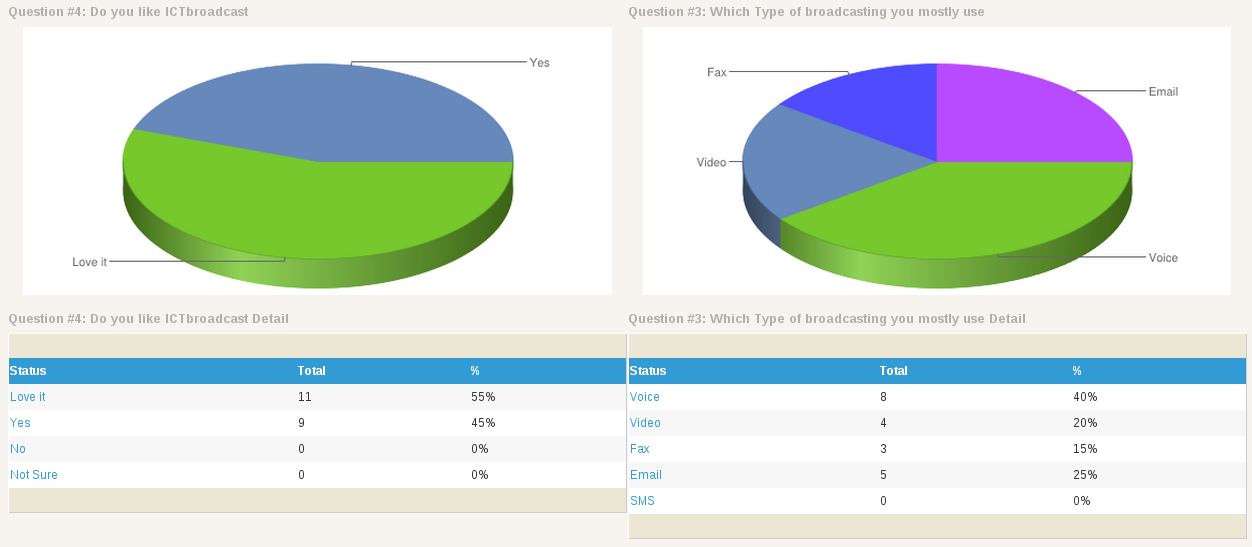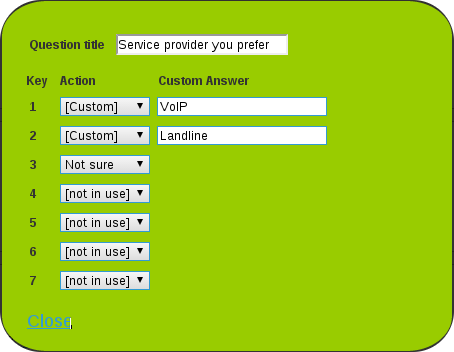Introduction:
In the modern era driven by data, businesses spanning different sectors depend greatly on precise and prompt data to make well-informed choices. Surveys represent one of the most efficient approaches to gather such data. Although online surveys have become increasingly popular, phone surveys remain integral to data collection endeavors. Nevertheless, conducting phone surveys manually can be laborious and demanding in terms of resources. This is where the significance of phone survey software becomes apparent. In the following piece, we will delve into the ways in which phone survey software can enhance your data collection initiatives and offer invaluable insights into your intended recipients.
1. Understanding Phone Survey Software
Phone survey software encompasses dedicated tools and platforms crafted to automate the execution of telephone surveys.These software solutions harness advanced technologies like interactive voice response (IVR) systems and computer-assisted telephone meeting (CATI) methods to streamline the process of data collection. By utilizing phone survey software, businesses can conduct surveys, assemble responses, and analyze information with improved efficiency and accuracy.

2. Benefits of Phone Survey Software
2.1 Increased Efficiency
The utilization of phone survey software brings about a noteworthy boost in efficiency by automating diverse elements of the survey procedure. It eradicates the necessity for manual dialing, diminishes the occurrence of human errors, and facilitates concurrent data collection from numerous participants. With functionalities such as IVR, respondents can navigate through survey questions utilizing touch-tone keypads, negating the requirement for a live interviewer. This automation not only saves valuable time and resources but also empowers organizations to carry out surveys on a larger scale.

2.2 Higher Response Rates
Phone survey software enables organizations to reach a broader audience and achieve higher response rates. It allows for random or targeted sampling, ensuring a representative sample of the population. By utilizing phone numbers from various sources and demographic data, organizations can target specific groups or regions for their surveys. Moreover, automated reminders and follow-up calls can be scheduled to increase response rates, leading to more robust and reliable data.
2.3 Real-time Data Collection
Phone survey software encourages real-time data collection, empowering organizations to access and analyze study data immediately. As respondents total surveys, the software compiles and organizes the information, making it promptly available for analysis and announcing. Real-time data collection permits organizations to identify patterns, designs, and developing insights instantly. This agility enables decision-makers to reply quickly to changing market conditions or advancing client preferences.
2.4 Enhanced Data Accuracy
Manual data entry introduces the risk of human error, which can compromise data accuracy. Phone survey software minimizes these errors by automating the data collection process. The software captures responses directly from respondents, eliminating transcription mistakes. Additionally, advanced algorithms and approval rules can be implemented to guarantee data integrity. By reducing errors, organizations can have confidence within the accuracy of their survey results, leading to more reliable experiences and informed decision-making.
3. Key Features of Phone Survey Software
3.1 IVR and CATI Capabilities
Phone survey software commonly provides functionalities such as IVR and CATI. IVR empowers respondents to engage with the survey utilizing touch-tone keypads or voice recognition, facilitating a self-administered survey experience. On the other hand, CATI enables live interviewers to carry out surveys using the software, allowing for intricate questionnaires and the capacity to delve deeper into respondents’ insights. These features grant flexibility in survey design and administration, catering to diverse research objectives and accommodating the preferences of respondents.
3.2 Survey Scripting and Design
Phone survey software gives intuitive interfacing for creating and customizing overview scripts. Survey administrators can plan surveys using various address types, branching logic, and skip designs. The software permits for the inclusion of multimedia elements such as sound prompts and recordings, enhancing the study experience. The adaptability in scripting and plan empowers organizations to create locks in and comprehensive surveys tailored to their particular research needs.
3.3 Data Management and Reporting
Efficient data management is a crucial aspect of phone survey software. The software automatically collects and stores survey responses in a centralized database. It enables easy retrieval, filtering, and sorting of data for analysis purposes. Additionally, reporting tools and dashboards provide visual representations of survey results, simplifying data interpretation. Phone survey software often integrates with data analysis tools, facilitating seamless data transfer and in-depth analysis.
3.4 Integration and Scalability
Phone survey software can coordinated with existing customer relationship management (CRM) systems, allowing for consistent information synchronization and consolidation. Integration enhances data precision and reduces manual data passage efforts. Besides, phone study program is scalable, accommodating surveys of varying sizes and complexities. Whether you need to conduct a small-scale survey or a large-scale research project, the software can handle the workload productively.
4. Best Practices for Phone Survey Software Implementation
4.1 Define Survey Objectives and Target Audience
Before executing phone survey software, it is pivotal to clearly define your overview destinations and identify your target audience. This ensures that the study questions and plan align with your research goals and collect important data from the desired respondents.
4.2 Design Clear and Concise Surveys
Clear and concise survey questions help guarantee exact and significant responses. Avoid equivocal or driving questions that might bias the reactions. Test the survey with a small test group to refine and optimize the survey before propelling it on a larger scale.
4.3 Maintain a Professional and Respectful Approach
When conducting phone surveys, it is essential to maintain a proficient and conscious approach. Clearly explain the reason of the survey and assure respondents of data privacy. Prepare interviewers, if appropriate, to provide the study questions in a neutral tone and avoid any potential biases.
4.4 Regularly Monitor and Evaluate Survey Results
Regularly monitor survey results to identify any issues or inconsistencies. Analyze the data for trends, patterns, and outliers. Consider using statistical techniques to gain deeper insights from the collected data. Adjust survey strategies and methodologies as necessary based on the analysis.
Conclusion:
Phone survey software offers numerous advantages in data collection efforts, streamlining the survey process and providing valuable insights into target audiences. With increased efficiency, higher response rates, real-time data collection, and enhanced data accuracy, organizations can make data-driven decisions more confidently. By leveraging the key features and implementing best practices, phone survey software can be a powerful tool in obtaining accurate and actionable information, ultimately boosting organizational success in various industries.
Leveraging Open Source in ICT